Continue reading “Such Coup. Many Unconstitutional. So Thwart.”
Age Gap Electric Chair

Deep in the carousel of images @sophiepinet posted last week of Warhol’s last Factory was this picture of Fred Hughes’s office, and that is the best install of a giant Electric Chair painting I think I’ve ever seen. When in doubt, just add more red.
Maybe if Christie’s had hung that Big Electric Chair painting on a matching orange wall, it wouldn’t have flopped. And anyway, was it even that big? It certainly wasn’t THIS big.
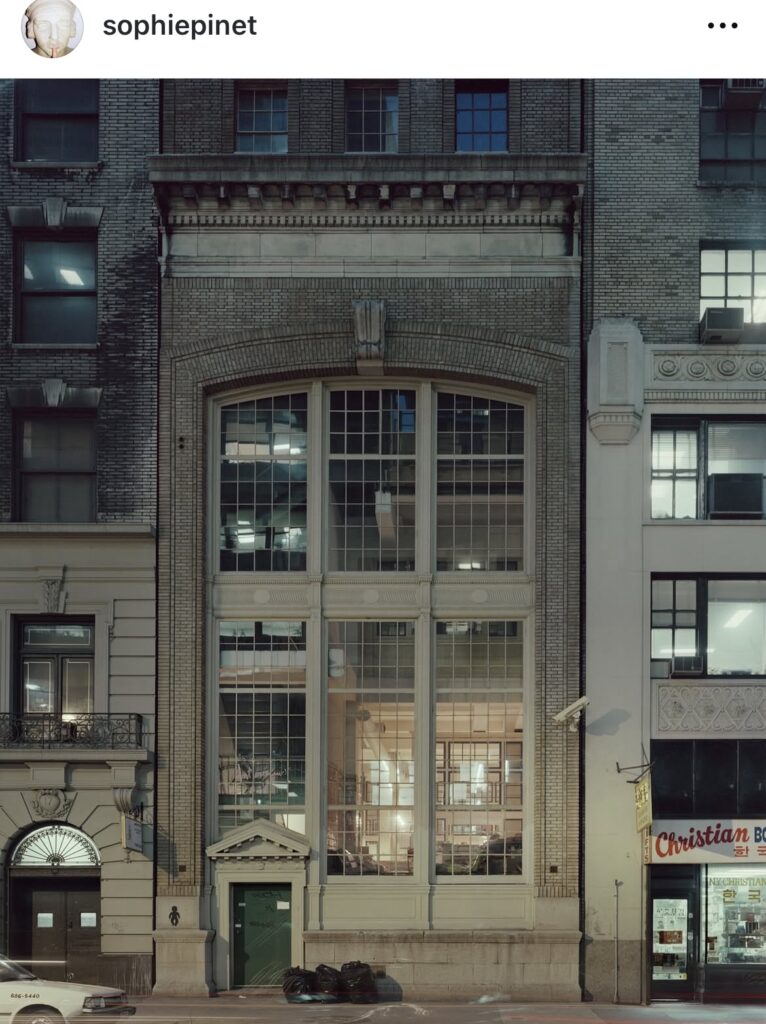
I figured I’d need the catalogue raisonné to figure out what painting this was, so I was just going to shoutout this low-key magic photo of the Factory and be done. [It used to be a ConEd substation running between East 32nd & 33rd Streets, which Warhol bought in 1981, and used from 1984 until his death in 1987. After that it became the first home of the Warhol Foundation, but in the early 2000s it got replaced with a condo tower. RIP]
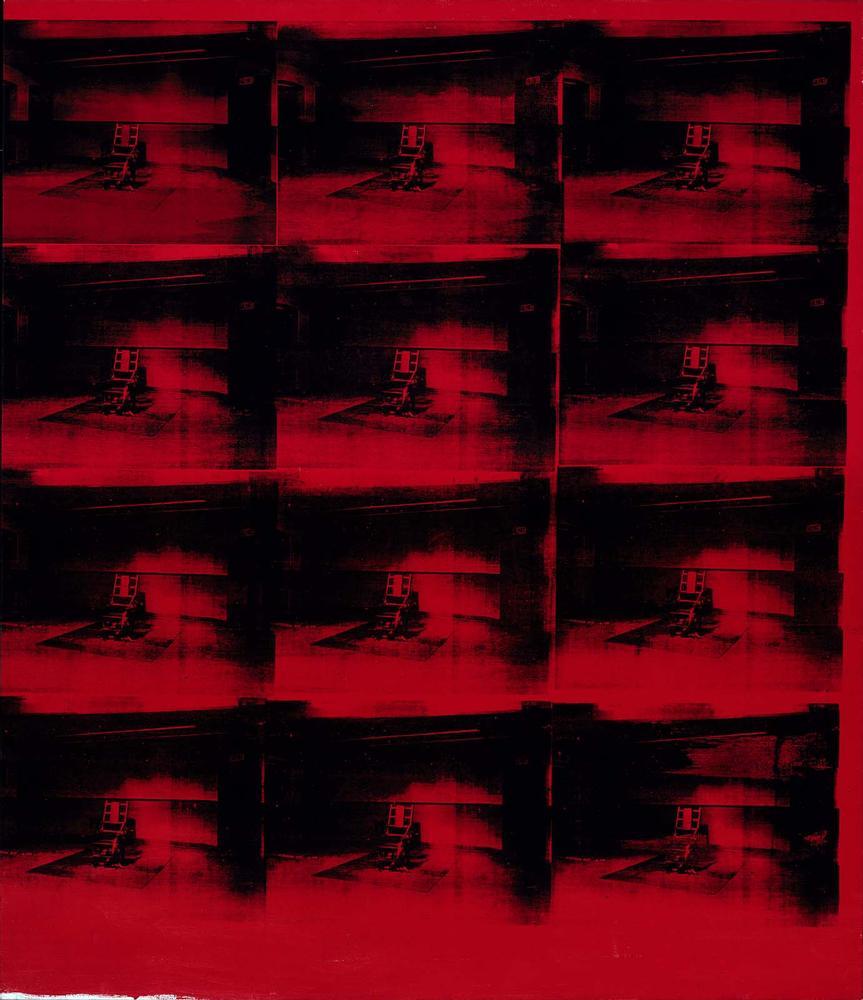
But then I found it, and I needed an eye rubbing in disbelief emoji, because the unpainted bottom edge of Hughes’ painting perfectly matches the Red Disaster painting at the MFA Boston. Which is almost 8 feet tall. And it is dated, 1963 and 1985. And it is a diptych. Or rather, it’s a diptych now.

The MFA acquired the painting(s) in 1986, direct from the Factory, almost while the paint on that monochrome panel was still wet. That paint, which looks like it matched the red of Hughes’ wall more than the 22-year age gap red of its partner. Someone in Pinet’s comments called this Hughes’ Diana Vreeland room
Was doubling the painting Hughes’ idea? Did the MFA request it? Were they just in the market for a bigger painting, too bad all you have this single panel…? Did they get the brushoff from Philip Johnson? Did Warhol bulk up any other old paintings like this? Are Warhol’s diptychs often hung as two entirely separate paintings? As if age gap wasn’t enough, they need wall gap, too? Have they ever been exhibited stacked on top of each other? Or maybe propped up on two tables?
Ruh-Roe
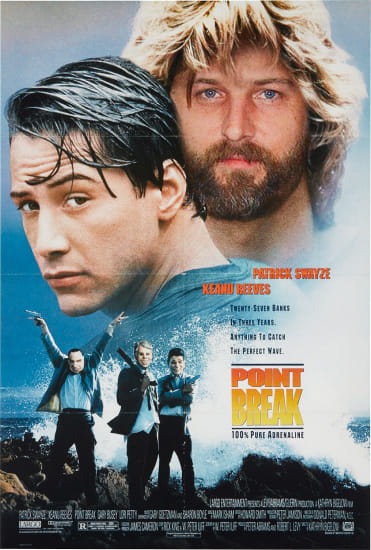
How no one bought the second greatest self-portrait Roe Ethridge ever made last fall, when it would have brought the creditor victims of Lisa Schiff’s purloining $3-4,000 before Phillips’ fees, is beyond me. Anyway, violent mask-wearing thieves disguised as US presidents could not be more on brand right now, and so it’s back, with a lower estimate and at least one bid.
2 July 2025, Lot 172 | Roe Ethridge, Untitled (Point Break), 2010, ed. 1/5, est. $2-3,000, current bid: $1,000, PROPERTY TO BE SOLD TO BENEFIT THE CREDITORS OF LISA SCHIFF AND SCHIFF FINE ART [update: sold for that one bid, $1,270] [phillips]
30 seconds later update: LOL this is insane. I just read an article about someone who suddenly decided to pay off a school’s entire lunch debt of $865, and then went on to raise money to pay off more, and then got a law passed to abolish lunch shaming. So if you have only $2,000, do NOT spend it on this Roe Ethridge portrait, the net proceeds of which will go to several millionaire collectors who won’t even notice. Instead, pay off an entire school’s lunch debt with it. And if you have much more than $2,000, pay off a school’s lunch debt, then just contact Kreps and buy another edition of this perfect picture. What are we even doing here?
Hardcore / Love, Leckey / Jafa
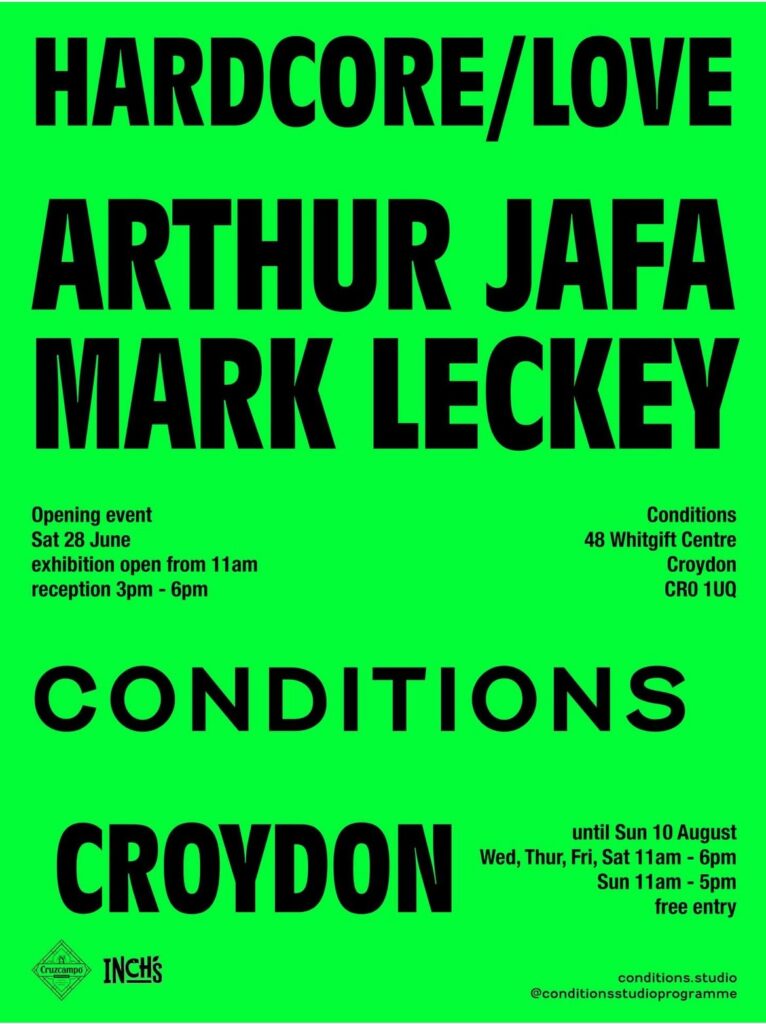
This has been hanging around on my instagram feed, but I just listened to Arthur Jafa and Mark Leckey talk about it on The Art Newspaper’s podcast, and now I must post.
This two-artist show titled Hardcore / Love at Conditions Studio Programme in Croydon brings together two of the most amazing works of video art of the century: Mark Leckey’s Fiorucci Made Me Hardcore (1999) and Arthur Jafa’s Love is the message, the message is death (2016).
The artists’ conversation with Ben Luke is unexpected and interesting, drawing affinities between these two works and the musical moments they inhabit. But also, as Mark points out, each film embodies the technology of its moment while marking a significant shift in media: from digital to analog, and from chronological to algorithmic.
I worry we’re too late for Jafa’s turn on NTS, the experimental radio station where Leckey has been programming for so long, and to such great effect. Maybe it’s archived. [here’s a direct soundcloud link]
Hardcore / Love is at The Whitgift Centre, Croydon, by Conditions, from 28 June through 10 August 2025 [conditions.studio]
Arthur Jafa & Mark Leckey on The Week In Art, with Ben Luke [theartnewspaper]
Arthur Jafa & Mark Leckey playlist 06.27.2025 [nts.live]
R.H. Quaytman Book Talk
A couple of weeks ago Miguel Abreu Gallery hosted a launch event for Book, the second volume of R.H. Quaytman’s catalogue raisonné/artist book, which covers her work through 2022.
I’ve always been interested in Quaytman’s accounts of being the child of a painter, and of inheriting the legacy—and full storage spaces—of her father Harvey Quaytman.
But that is not important now, because now all I want to hear about is the incredibly dynamic of being on a panel with your mom. Quaytman’s mother, the artist-turned-poet Susan Howe, absolutely ran away with this conversation, even as she managed to (mostly) keep the focus on her daughter and her book.
Which, she cannot believe she called her book Book, what was that about? Just when you think the family dynamic has ebbed, and the conversation has slipped back into typical panel mode, everyone jumps on the pile of discursive rubble trying to figure out what Benjamin meant with the Angel of History.
I hope there is a mother-daughter podcast in the works, because I’ve got $5/month burning a hole in my pocket rn.
R.H. Quaytman, Ones, Chapter 0.2, has been extended through July 12, 2025 [miguelabreugallery]
Previously, related: R.H. Quaytman, Paul Klee, and Martin Luther walk into a bar
George Inness, Industrial Niagara
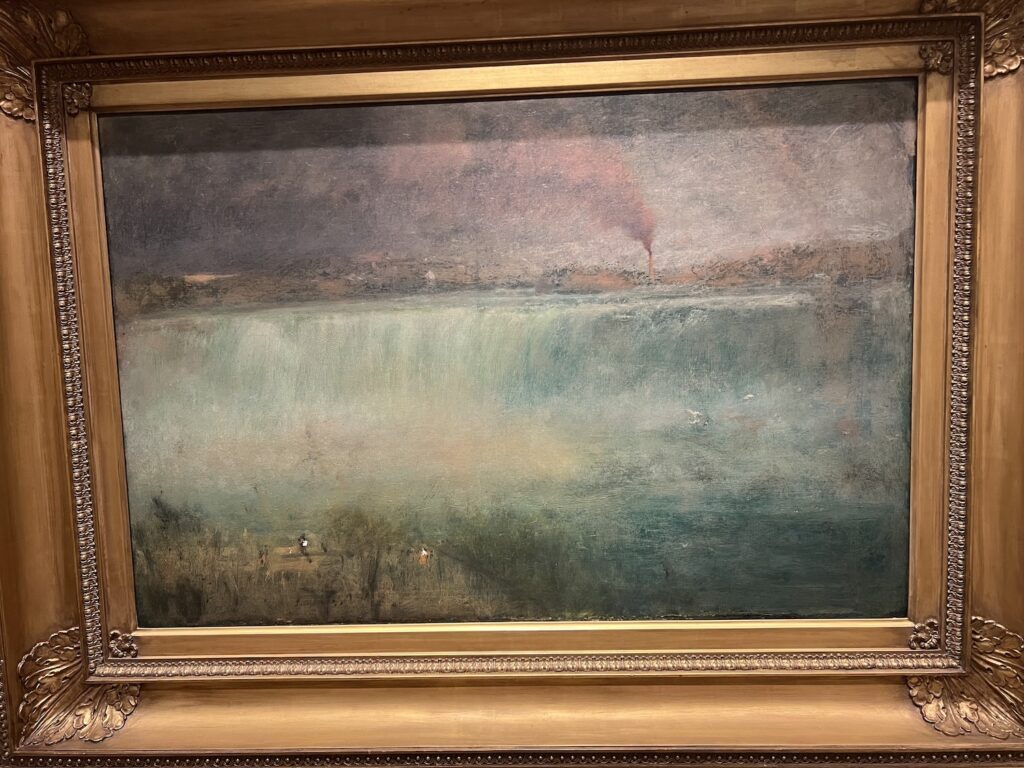
I had to go check something at the Smithsonian American Art Museum for a thing, and on the way, I got stopped by the tiny painters in the lower left corner of George Inness’s misty, smoky 1889 painting of Niagara. It had just recently been declared a state park, and the factories, mills, and brothels along the cataract had not yet been cleared away. Pretty sure it’s an edenic paradise now, at least from some angles.
どうでもええ… LV X YK Surfboards
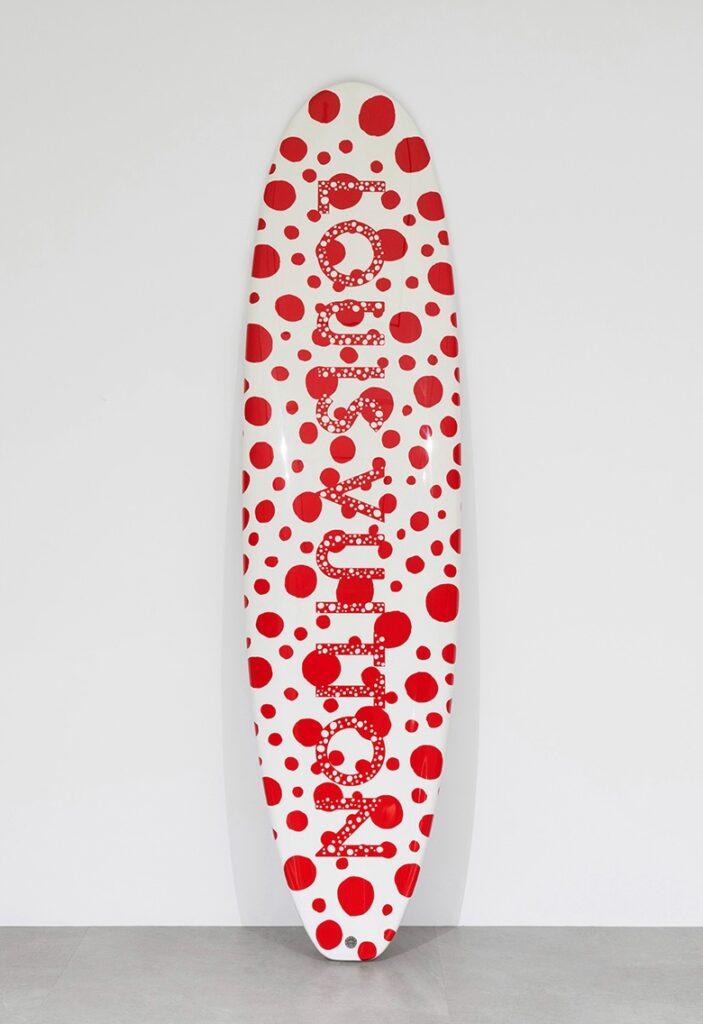
I could have gone another couple of years without realizing Louis Vuitton made several hundred Yayoi Kusama surfboards as part of their sprawling animatronic collabsploitation in 2023.
There’s a longboard and a shortboard variant, and at least two motifs: dots and tentacles. The PR copy regurgitated on all the hypesites says they’re a tribute to Kusama’s pumpkin sculpture on the dock at Naoshima. If that’s the true, then why aren’t they all destroyed in a typhoon?
12 July 2025 lot 69 [not nice] | LV x YK Surf (red & white), ed. 100, JPY1.5-2.5m [sbiauction]
Previously, all too related: Kusama X Vuitton: ‘I was finally able to bring home the crown’; The Infinity Room is now an LV Pop-up
Gavin Brown Woodblock Prints @ La Pulce
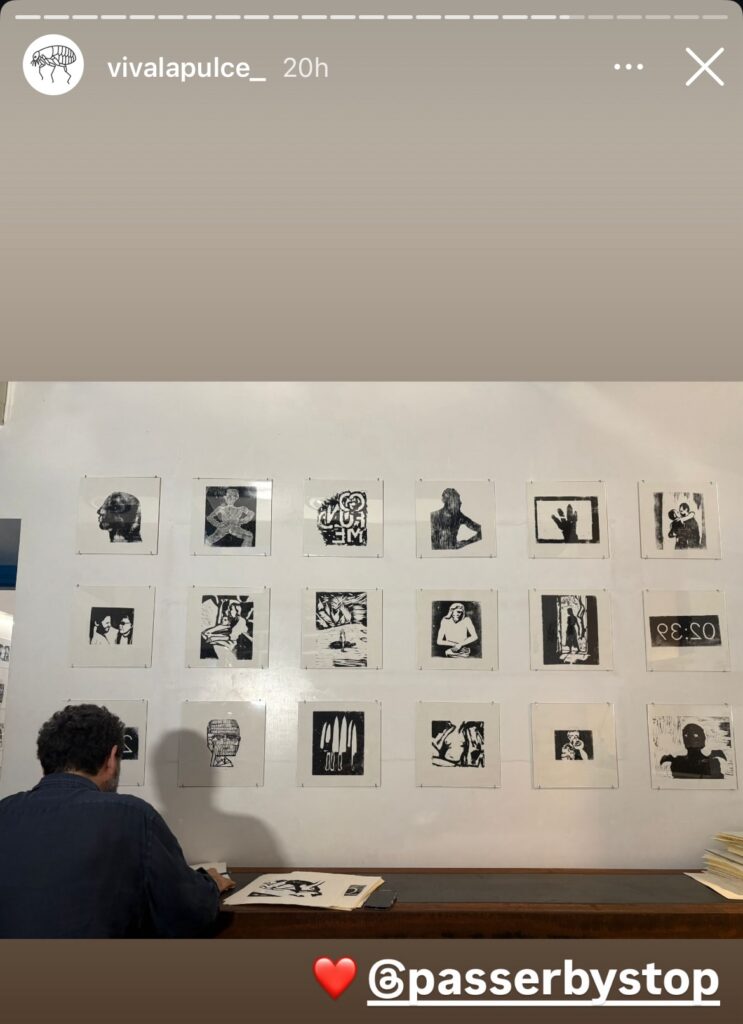
In the year 2000, on the small bookshelf in the grass-roofed house we rented on the beach in Tulum, was a years-old Gallery Guide, the monthly, pocket-sized directory of all the shows in all the galleries around town (NYC). Flipping through it, I was surprised to see Gavin Brown, a dealer friend, had had a show at David Zwirner. He was a bit cagey when I asked him about it later. I’m very glad that over the years, he has eased up, and has gotten back to showing work.
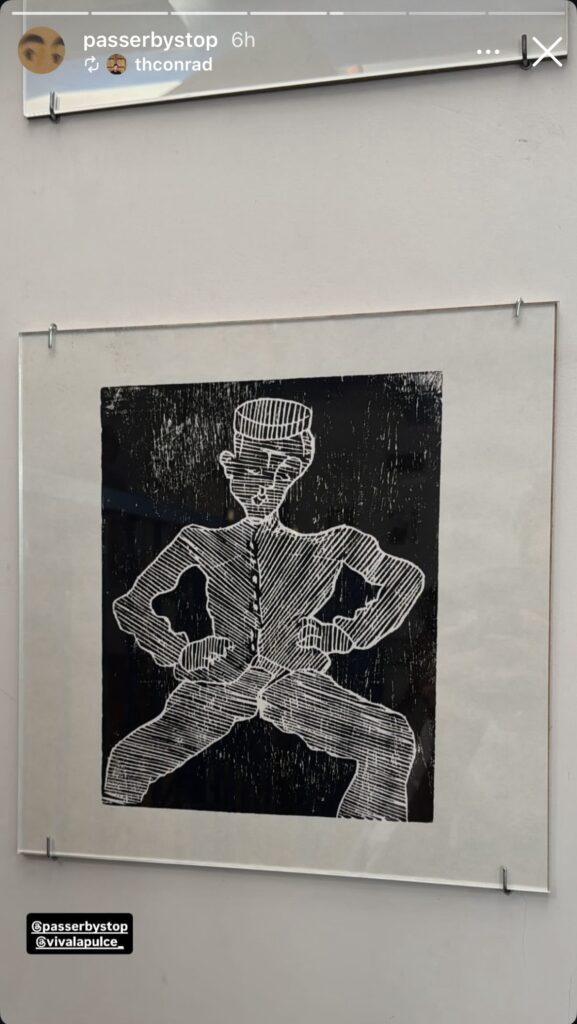
Last night Gavin opened Proof of Life, a show of woodblock prints at La Pulce, his second project/gallery space in Rome, which opened this spring. I could not make it, but I am glad to see the results spreading on instagram. Brown has turned to a laborious mediated process to make fleeting images of daily life. That perhaps included a trip at some point to the Pompidou, or to an exhibition somewhere one of my favorite Soutines was on loan.
Gavin Brown Proof Of Life is at La Pulce, Via Dei Tre Archi 5, Roma, till idk [ig]
Deliberation Before Action Protects You From Regret

The new-style Kufic calligraphy on this 10th century bowl is glorious. It translates to “Deliberation before action protects you from regret; good fortune and good health.” I’m assuming that’s not an Oxford semicolon.
Here is a reading and translation that follows along the inscription.
[via @sarcher.bsky.social]
Four Nudes, No Drinks
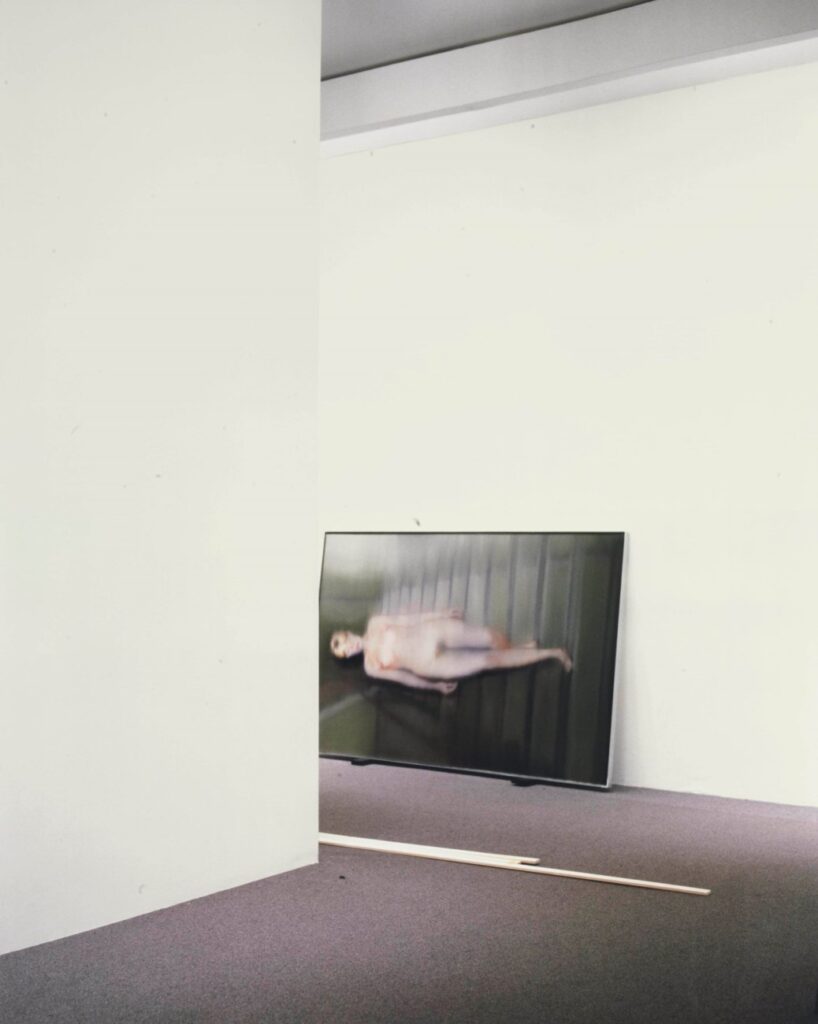
This is one of the Four Nudes Louise Lawler showed at Metro Pictures, beginning on 15 Febrary 2003, the date of a worldwide protest march in which millions and millions of people protested the fraudulent escalation toward the US-led war in Iraq.

Isaac Fuller Portrait Do-Over
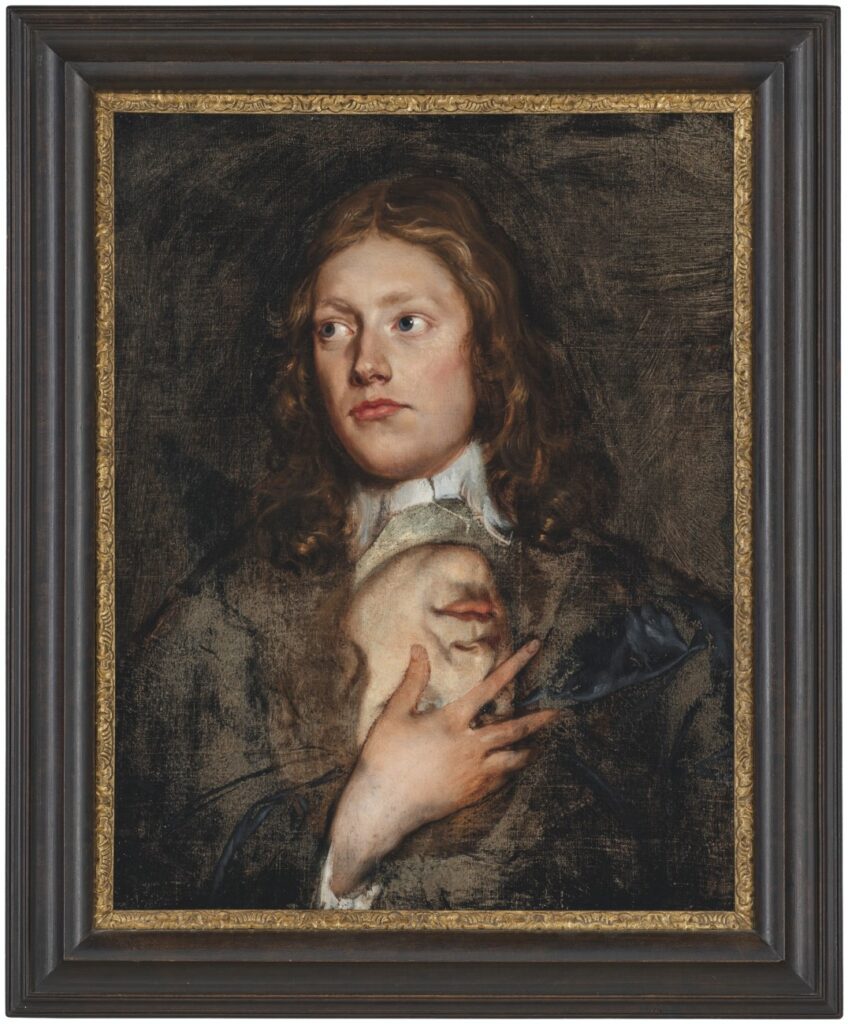
I don’t know anything about 17th century English painter Isaac Fuller, except that he has a dozen paintings attributed to him at the National Portrait Gallery. And, according to the brief text accompanying this painting at Christie’s in 2021, he was a “flamboyant painter,” and a “notorious drunkard” with a “bohemian lifestyle” whose fresco in All Souls at Oxford was “too full of nakeds” to last, and whose last series of works consisted of “decorative schemes” for a string of taverns he frequented.
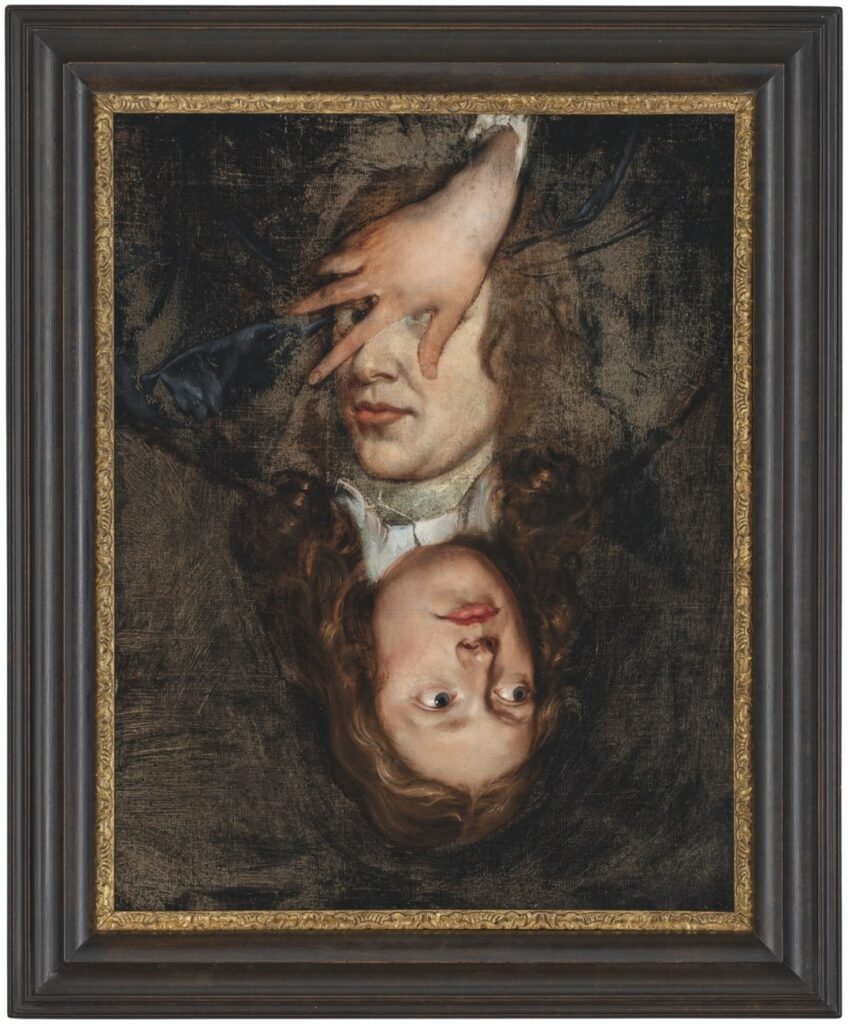
None of that is quite as interesting as this picture, two pictures, really, one on top of and around the other. The portrait underneath, which is now upside down, was uncovered in a recent restoration, says Christie’s. The way it’s been uncovered to keep as much of each portrait intact does make it feel like a deliberate composition, not just an overpainting. Like that extraordinary Ludolf Backhuysen seascape painted around that Isaack Luttichuys portrait that Simon Dickinson brought to TEFAF this year.
What was up in the late 17th century that painters were piling paintings on top of each other, though?
Jonas Would Never

Unless you pay this man $399 so he can surveil you and everything and everyone you see, he’ll never be able to afford Jonas Wood paintings, and will have to keep buying large edition benefit prints.
All Jack Pierson’s World’s A Stage
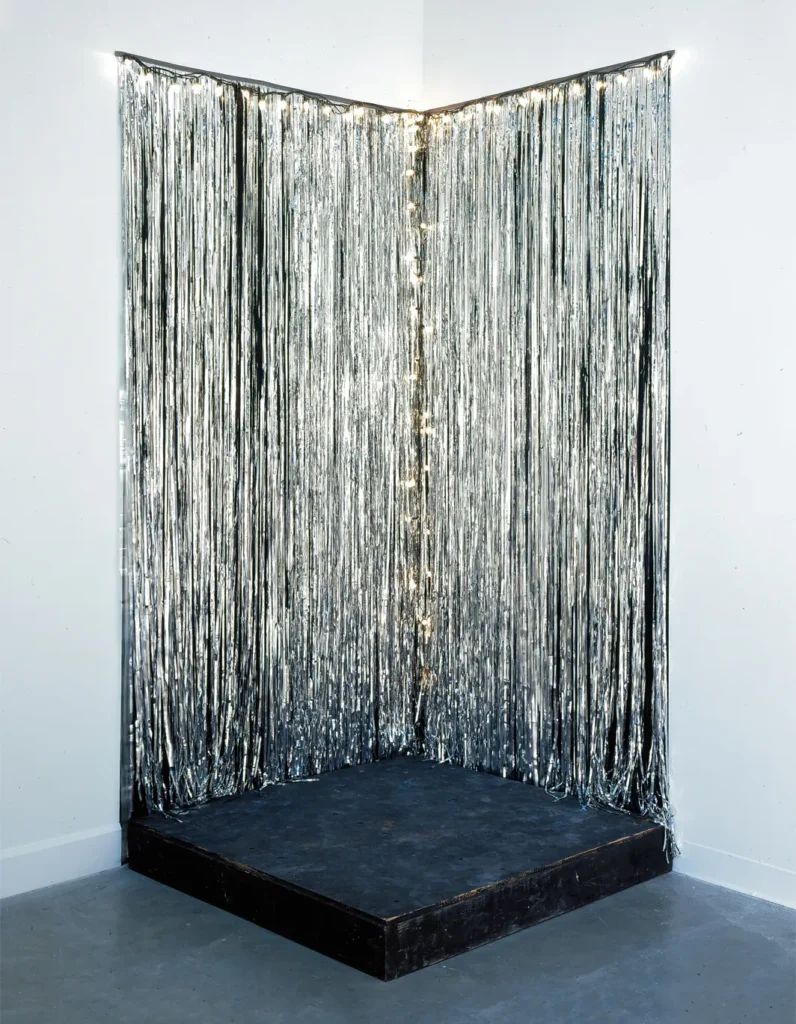
Speaking of go-go dancing platforms and light strings, I cannot get out of my head the confluence of Jack Pierson showing Silver Jackie at Pat Hearn less than a month after Felix Gonzalez-Torres showed “Untitled” (Go-Go Dancing Platform) at Andrea Rosen.
Pierson’s show was called Diamond Life, and it was the 30-yo artist’s nostalgic lament for the squalid glory of his lost youth. In the main gallery of Hearn’s third-floor Wooster St walkup, Pierson staged a recreation of his apartment from his early 20s Miami beach bum era. And in the back was this tiny, abject, artificially aged stage—Pierson’s always called it a stage, I think—which called out his punk and performance art days in Boston.
The Aspen Art Museum re-staged Pierson’s first five shows in 2016. David Rimanelli wrote most generously about Silver Jackie in 2021, when it was on the cover of Artforum. Rather than influence or interaction, or two nearly simultaneous critiques of Michael Fried’s Minimalist theatricality (derogatory), the more I look at these two ostensibly similar works, the more I think they were two artists who happened to be dancing at the same time, but to their own tunes.
Window, McMansion, Randolph
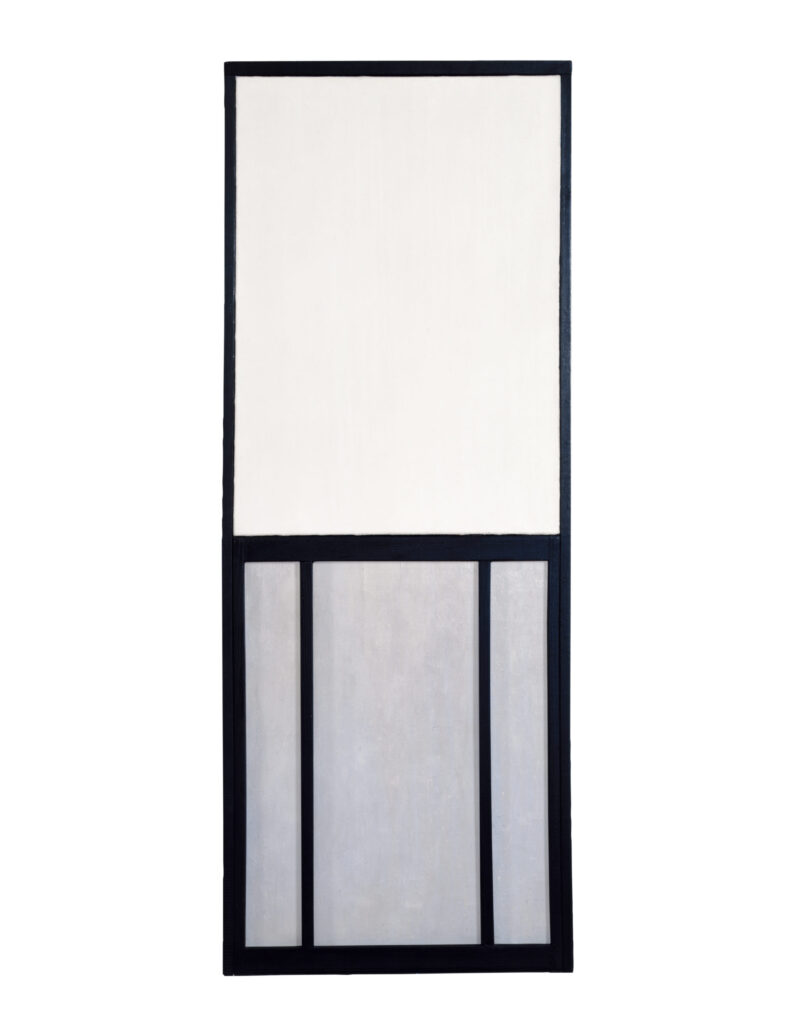
In our timeline, in October 1949, Ellsworth Kelly, a young former soldier studying painting on the GI Bill, saw the windows of the Museum of Modern Art in Paris in a new way, as a composition, one that could become a painting/object just as it was, and in fact, the whole world was like that, full of subjects he could spend his whole life discovering and transforming into paintings.

In another timeline, a young Ellsworth Kelly saw these two off-the-shelf prairie mullion windows kludged together to look like one tall, misaligned, window on a house in the middle of a gravel field in North Carolina that was just posted on McMansion Hell, and drove straight to the army to re-enlist as a requisitions compliance auditor, eventually retiring from a job at a cubicle in Ring C of the Pentagon. His little yard is full of old stoves, which he salvages from apartment turnovers, repairs, and sells on Facebook.
Window, Museum of Modern Art, Paris, 1949 [ellsworthkelly.org]
glam metal modern but also your contractor is going to jail dawg [mcmansionhell]
All The Other Felix Gonzalez-Torres Dancing Platforms
So “Untitled” (Go-Go Dancing Platform), 1991, is unique, but it is not the only one. Now that it has sold “a serious hold” and a $US16m asking price, let’s take a look at the six [!] related works Felix Gonzalez-Torres made. And then decided were not works after all. What are they, where are they, and what is to be done with them?
Beuys Collector Collection Shelf

After working with Joseph Beuys on his multiples for many years, Jörg Schellmann made small editions of four pieces of Beuys-designed furniture in 2008, 22 years after the artist’s death.
Schellmann Art’s description says all these pieces—three tables and a bookshelf, no vitrines, no felt—were originally made in 1953 for an unidentified collector in Dusseldorf. I’m not sure why they’re being so cagey. In 1953 Beuys’s two major collectors were brothers: Hans and Franz Josef van der Grinten. Besides collecting his work, the van der Grintens gave Beuys his first show, in their house, let him move in with them, and represented him in their gallery. Was it somehow not them?
The original table Beuys made was later incorporated into an artwork, and then into Block Beuys, the seven-room gesamtkunstinstallationwerk at the Hessisches Landesmuseum in Darmstadt. A controversial renovation and conservation project, including a March 2008 symposium on what to do with the original jute wallcoverings and carpets, was the immediate context, if not the specific impetus, for the collection. [spoiler alert: they’re still gone.]
Anyhow, I like this shelf more than I expected. And I like how the lighting in this example, which sold for much less than retail at Phillips in April 2020, right in the mouth of the pandemic, shows the ladder-like structure.

If you can’t wait for another to turn up, the form could be replicated in Ikea IVAR components, but not its details. Though the shelves look to be straight up lumber. And built up? The verticals are pinned to the wall, and are rounded, but and the shelves are neither. The desks all have extensive joinery, so though the carpentry details that will keep the whole thing from wobbling itself to death in actual use are not apparent, there must be something. Right?
Joseph Beuys, Royal Pitch Pine, 1953/2008 [schellmannart]
